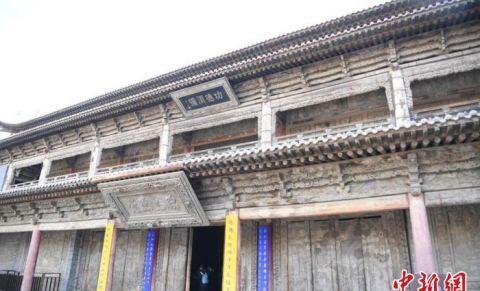Wu Wei, deputy director of the Ganzhou District Museum in Zhangye City, Gansu Province, said in an interview with China News Network reporter on the 17th that the Zhangye Great Buddha Temple, which is known as the "Western Xia Guo Temple" by the outside world, has made new progress in the "digital twin" of its architecture, murals, painted sculptures and other important cultural relics.
"Considering the fragility of the Zhangye Great Buddha Temple architecture, the murals and painted sculptures of the Great Buddha Hall, the pressure of opening up, and the importance of digitization to permanently store cultural relics information, the digitization of the murals of the Great Buddha Temple of Zhangye Has been initiated." Wu Wei said that at present, the museum commissioned the Institute of Cultural Relics Digitization of Dunhuang Research Institute and the School of Architecture of Tianjin University to compile the "Zhangye Great Buddha Temple Immovable Cultural Relics (Architecture, Murals, Painted Sculptures) Digital Protection Project Plan", which has recently passed the review of the State Administration of Cultural Heritage.

The picture shows the perimeter of the Zhangye Great Buddha Temple building. Photo by Yang Yanmin
Founded in the first year of Yong'an in Western Xia (1098 AD), Zhangye "Western Xia Guosi" is an imperial Buddhist temple in the Western Xia period, and was listed as a national key cultural relics protection unit in 1996. It is an important group of scenic spots and historical sites on the Silk Road, preserving the country's largest Western Xia Buddhist hall, the largest indoor wooden tire clay sculpture of reclining Buddha, the most complete first-time engraving of "Yongle Beizang", and is a Buddhist art museum integrating architecture, sculpture, murals, carvings, scriptures and cultural relics.
Wu Wei said that the project will use mural digitization, three-dimensional reconstruction of color sculptures, three-dimensional laser scanning, digital photogrammetry, building information modeling (BIM), panoramic roaming and other technologies to create a "digital twin", and use this to integrate previous protection projects, daily maintenance of record files and other documents, atlas materials and other multi-source information data, combined with on-site digital survey, to assess the effect and gains and losses of previous protection projects, and provide information services for subsequent protection projects. Combined with online and offline digital display technology, fully display the value of the architecture, painted sculptures and murals of the Great Buddha Temple, display the historical changes and historical patterns of the Great Buddha Temple, and disseminate and inherit the cultural value of the Great Buddha Temple.
Wu Wei said that in the process of building a "digital twin", it will also make full use of the geometry, space, structure, texture and other data and information obtained by digital technology, deeply study the characteristics, artistic characteristics and achievements of the Great Buddha Temple architecture, painted sculptures and murals, artistic characteristics and achievements, historical information, cultural connotations, etc., further excavate the value of cultural relics, reveal the internal and external contradictions of the value system, and propose corresponding countermeasures. Investigate and discover the structural deformation, disease damage and causes of cultural relics, and potential correlations, and provide basic data and information services for subsequent structural deformation monitoring, protection engineering, daily maintenance, display and utilization, and scientific management.
Text/Yan Jiao Gao Ying Li Yalong
Source/China News Network